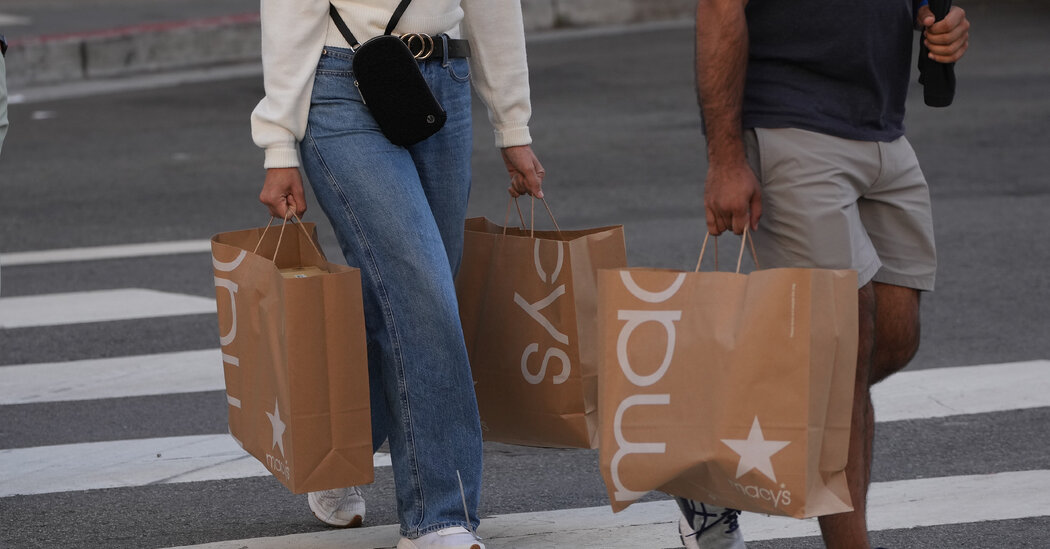
The Context
Holiday retail sales are a closely watched measure of the health of the U.S. consumer and often the most lucrative time of the year for major retailers. Even in tough financial times, the question is not whether Americans will spend during the holidays, but how much.
As the Federal Reserve has worked to tamp down inflation by raising interest rates, Wall Street and retail executives have been closely monitoring consumer spending. Despite the Fed’s efforts, an economic slowdown has remained elusive as shoppers spent heavily on seasonal items in the fall. On Wednesday, the Fed kept its benchmark interest rate steady at 5.25 to 5.5 percent, but said it could still raise rates again.
The trade group noted the various economic pressures that U.S. consumers face heading into the holidays: Student loan repayments resumed last month after a three-year pause, consumer confidence has fallen as borrowing costs have remained elevated, and credit card balances are higher.
“We all recognize that there are some headwinds that are impacting consumers, and they’re going to continue to play a role in the final months of this year,” Matthew Shay, chief executive of the National Retail Federation, said on the call. “In spite of the uncertainty in the economy and the challenges households are facing, we’ve seen strength and resilience across the consumer sector.”
The organization highlighted the signs for optimism in the economy: The labor market has remained strong, and gross domestic product expanded at a 4.9 percent annual rate over the summer.
“The cumulative effect of all of these things is going to show some moderation in consumer behavior relative to the last several years of holiday spending,” Mr. Shay said. He described the dynamic as both “predictable and ultimately inescapable” as the economy normalizes coming out of the pandemic.
The Background
This year’s estimate of holiday sales growth is lower than in previous years. In 2022, holiday sales increased 5.3 percent from the year before to $936.3 billion. In 2021, they rose 12.7 percent.
Average holiday sales growth from 2010 to 2019 (right before the pandemic) was 3.6 percent, the organization noted.
What’s Next
This month, major retailers like Walmart, Target and Macy’s will report quarterly earnings and are expected to give their outlook on the fourth quarter. Over the summer, major retailers warned that they were seeing a slowdown in spending and that their customers were showing signs they were more financially strained than before.
Target is seeing a slowdown among its shoppers, even in categories where people continued to buy despite higher prices, the retailer’s chief executive, Brian Cornell, told CNBC on Thursday.
“They’re managing that budget really carefully,” Mr. Cornell said of Target shoppers. “In discretionary goods we’ve seen seven consecutive quarters of both dollars and units declining.”






